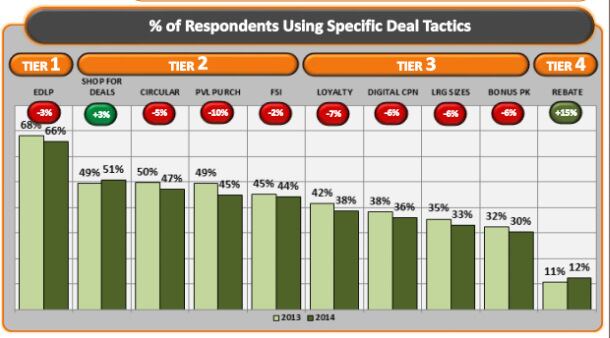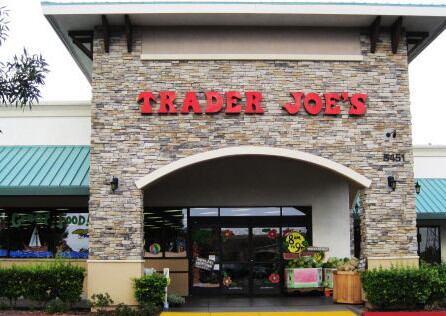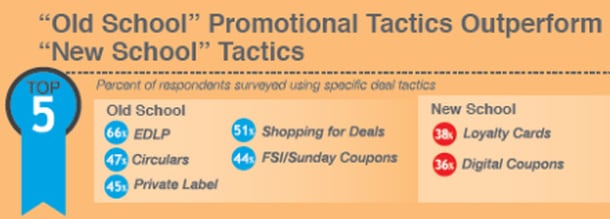Dr. Kurt Jetta, founder & CEO of CPG (consumer packaged goods) analytics firm TABS Group, told FoodNavigator-USA: “The evidence is pretty compelling… there are fewer incremental sales and profits being generated due to much broader use of these programs with such retailers as Safeway, CVS, Walgreens and Kroger.
“TABS Group has tracked hundreds of instances where the promotional lifts just die when retailers move to an exclusive loyalty or digital platform.
“There is not a whole lot going for these programs, yet retailers are insistent on doubling down on their investments in them, and manufacturers are doing nothing to resist them or at least be an agent of change.”
Loyalty is an illusory concept in food retail
As to the basic issue of whether loyalty cards create loyalty, the simple answer is that they don't, claimed Dr Jetta, who observed that loyalty card shoppers are in fact the “most disloyal", and more likely to shop at multiple retailers looking for the best deal. Meanwhile, all consumers are increasingly likely to spread purchases across multiple outlets these days.
“TABS Group Consumer Value study for 2014 [an annual survey of 1,000 adult shoppers aged over 18] shows that that the average user of loyalty programs shops in 3.6 outlets for consumables whereas the average non-user shops in 2.9 outlets,” said Dr Jetta.
“A better description of these loyalty programs are ‘rewards’ programs, and they are just another tactic used in the arsenal of [what TABS Group calls] active deal shoppers.”
And these shoppers are simply looking for the best deal, he said, which you can deliver without investing in a costly loyalty card scheme.
“92% of shoppers in our latest consumer value study use at least one deal tactic regularly, and 42% regularly use five or more deal tactics. Our data [see chart below] shows that people are participating in individual deal tactics less - because the deals are getting less compelling - but they are shopping around for the best deal more.”

The personal touch? It’s overrated…
Meanwhile, if your aim is to give shoppers a warm and fuzzy feeling about your brand, there are also other tactics you can employ, he said (stores such as Trader Joe’s and Whole Foods - which inspire the most ‘loyalty’ by this definition - do not have loyalty cards).
And for all the talk about how mining data from loyalty card schemes enables retailers to personalize offers and conduct more sophisticated shopper analysis that informs ranging decisions, they have actually “proven to be fantastically ineffective” for retailers such as Tesco when it comes to defending their business from lower-priced competitors such as Walmart or Aldi, he claimed.
Rather than offering tailored deals to loyalty card members, CPG manufacturers and retailers looking to drive incremental sales via trade spending might be better served by offering truly compelling deals that every shopper can access, he said.

Loyalty schemes are expensive to operate: 'Companies are spending more to promote in programs that have lower impact'
He added: “Too many retailers point to their rewards program as their number one strategy to increase sales and profit and delude themselves into thinking that they can personalize the offers to shoppers so that they are more 'engaged'.”
In reality, loyalty schemes are more expensive to execute (IT, infrastructure, analytics) than temporary price reductions in store or circulars, which means retailers often expect manufacturers to subsidize all or most of the promotion, which means discounts are not as deep and the offers end up being less compelling for consumers, he said.
“We have a situation where companies are spending more to promote in programs that have lower impact than the less expensive programs.”
Despite the excitement over the brave new world of online coupons and personalized promotions, meanwhile,“old school” strategies from Sunday circulars to FSIs (free standing inserts) still do better, he said.
And as for the insights gained from basket analysis of loyalty card shoppers, much of the useful data (people that buy product X also tend to buy product Y), can be gleaned through other means, or simply by analyzing transaction data, he said.

Loyalty schemes alienate marginal customers
Another factor working against loyalty schemes is that by their nature, they exclude people (only card holders can access the deals) and alienate 'marginal' customers that are actually becoming increasingly important to retailers, he said.
“For ‘loyalty’ retailers, almost all of the offers in their circular can only be achieved if you have a rewards card. In addition to a level of coercion many find offensive, it is just plain bad business to hinder marginal customers from coming into the store and buying products they may not normally buy or buy them in heavier quantities…
“There is a high percentage of non-card holders that are heavy shoppers, and just bounce from store-to-store shopping for the best deals.”
We regularly see ads where it takes several seconds to decipher the actual consumer offer

Many loyalty card offers, meanwhile, can also be heavily qualified, he observed, noting that deals which only kick in with the purchase of three products, or when you spend more than $50 “either exclude the vast majority of shoppers or aggravate and alienate” the rest.
And many offers are just plain confusing, he claimed:“We regularly see ads where it takes several seconds to decipher the actual consumer offer, ‘Mix & Match’ and ‘Spend $50 and get $10 off these selected items’ are just two of dozens of examples where the consumer actually has to stop, decipher and understand the offer. Roll this up to several dozens of these types of offers in a typical 16-page circular and a meaningful number of consumers will just check out and ignore anything that cannot be instantly understood.”
The problem is not that we’re training consumers to buy on deal. The problem is poor quality deals
But more importantly, he said, many of the deals offered to loyalty card members are simply less compelling: “While the quantity of promotions may be increasing, we are tracking far fewer instances of deep discounting. After all, there is a clear, documented relationship between lower prices and higher sales. It's called the law of demand.
“The problem is not too many deals, or the fact that we’re training consumers to buy on deal. The problem is poor quality deals.”
So how should retailers and manufacturers respond? It’s not rocket science, said Dr Jetta: “Make deals compelling and simple for consumers and they will buy more stuff.”
Read more from Dr Jetta on trade spending: Trade spending: The elephant in the boardroom?
